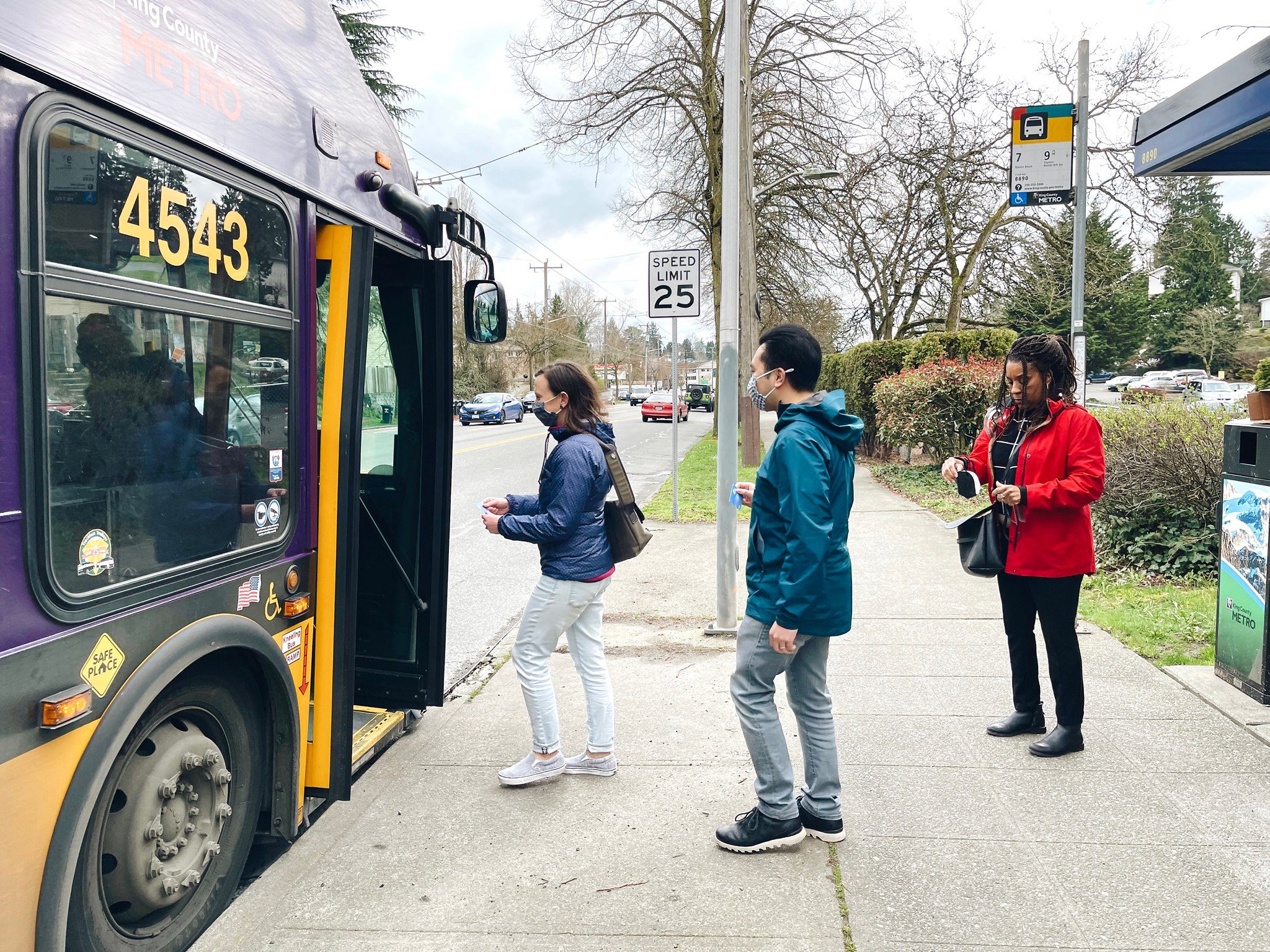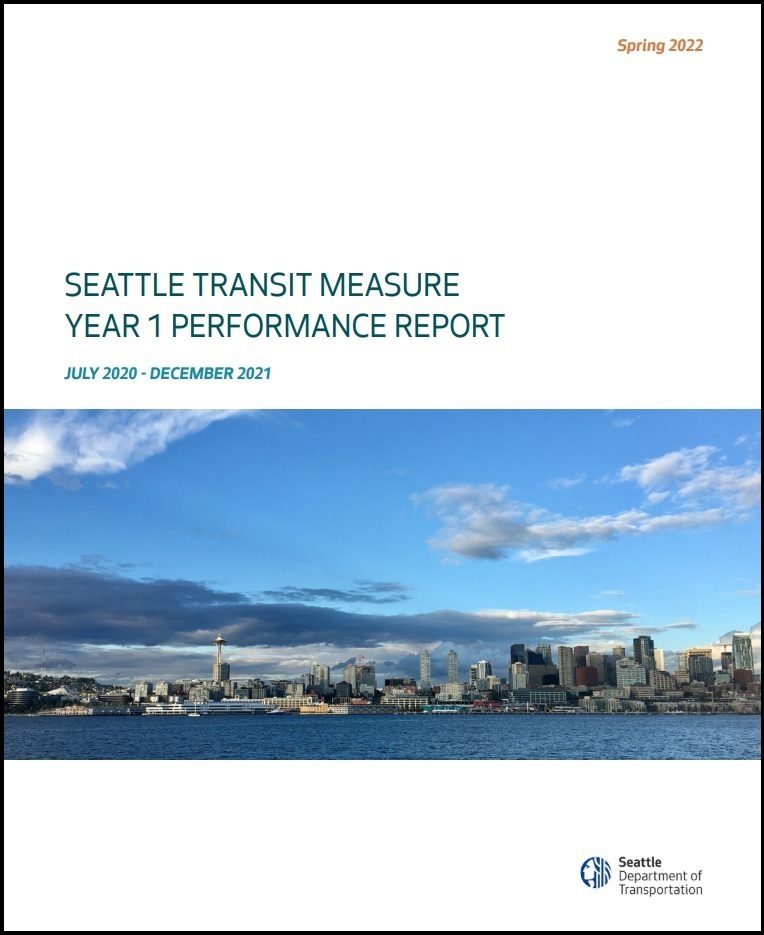 Three people get ready to board a King County Metro bus in southeast Seattle. Photo: SDOT
Three people get ready to board a King County Metro bus in southeast Seattle. Photo: SDOT We recently published the first annual report for the Seattle Transit Measure, a funding measure passed in 2020 with support from over 80% of Seattle voters. The Seattle Transit Measure replaces the Seattle Transportation Benefit District (STBD), which Seattle voters originally approved in 2014 and which expired at the end of 2020.
You can check out the annual report to see how the measure is helping fund additional transit service for King County Metro, as well as expanding access by providing free transit rides to more than 20,000 Seattle community members.
This blog post also provides a few highlights and key takeaways from the report. We hope you find it informative – and we appreciate your interest!

What is the Seattle Transit Measure?
- The Seattle Transit Measure was passed in 2020 with over 80% of Seattle voters approving the measure.
- The program supports additional bus service from King County Metro on key transit routes in the city of Seattle.
- It also helps expand access to transit by providing over 20,000 free ORCA cards to young people, seniors, public housing residents, and essential workers throughout the city. These access programs saved participants more than $4 million in 2021.
- The measure is funded through a 0.15% sales tax (equivalent to 15 cents on a $100 purchase).
Highlights from the annual report:
- Funded additional transit service in Seattle: Despite the numerous financial, economic, and operational challenges that public transportation agencies experienced in our region during the pandemic, we’ve still been able to fund over 3,200 weekly transit trips on King County Metro routes throughout Seattle over the past year. This helps ensure more buses arrive more frequently all times of the day and throughout the week.
- Helped build infrastructure to make buses more reliable: This program also provided funding to design and build projects to improve bus stops, speed up transit travel times, and improve bus reliability for 14 bus routes operating in Seattle.
- Supporting West Seattle and Duwamish Valley community mobility during West Seattle Bridge closure: We also paid for additional transit service on key West Seattle transit routes to help people get around during the ongoing closure of the West Seattle Bridge. In partnership with King County Metro, the transit measure also helped fund the West Seattle – Flip Your Trip campaign, which provided residents of West Seattle and Duwamish Valley communities with $25 of free trip credits to encourage them to use transit, vanpools, bikes, or scooters instead of driving alone.

- Launched the Recovery Card program: To help support essential workers who continued to travel to in-person jobs during the pandemic, we launched the Recovery Card program to provide fully funded (free) ORCA cards to restaurant and grocery store workers in Pioneer Square and Chinatown-International District. This has been the program’s most used ORCA card program, with the average participant taking 200 trips in just the first 6 months of the program.
What’s ahead for the measure in the coming year:
- Prioritizing new service investments: We’re working with the Transit Advisory Board (who provides financial and programmatic oversight for the transit measure) to finalizing an equity-focused process for prioritizing when and which routes we add to new transit trips.
- Transitioning to Free Youth Fares across the region: After the ‘Move Ahead Washington’ transportation package was passed by the Washington State Legislature in early 2022, many transit agencies throughout the region are planning to implement free fares for all riders 18 or younger. The program is already working closely with King County Metro and Sound Transit to ensure a smooth transition from the transit measure-funded ORCA Opportunity program to this new model, and we look forward to identifying new ways to remove and reduce the cost barriers for transit for Seattle’s lowest income riders.
Interested in learning more?
Additional resources on the web:
Previous SDOT Blog posts:
- July 2020 blog post: Six-Year Seattle Transportation Benefit District Proposal to Aid in Equitable COVID-19 Recovery
- November 2018 blog post: More good news for the Year 3 Seattle Transportation Benefit District Performance Report
